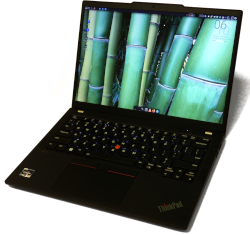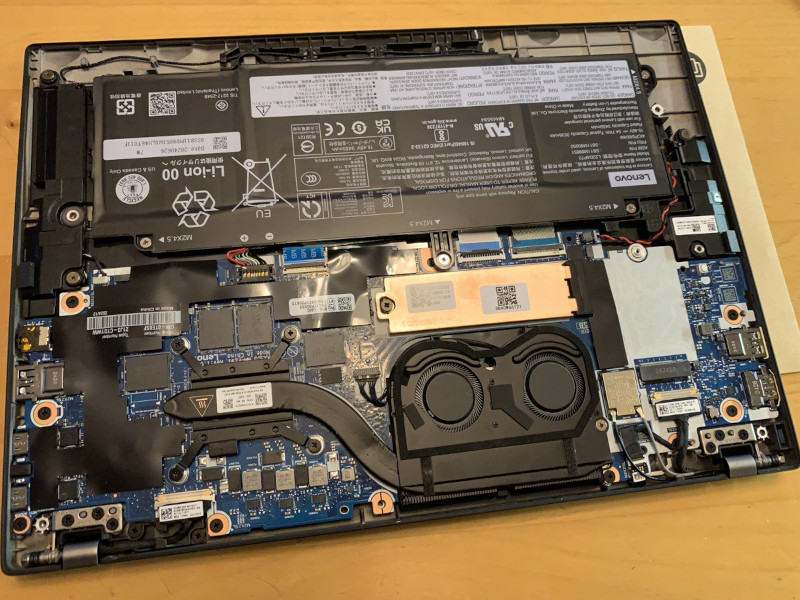Linux on the Thinkpad X13 Gen4

|
by Craig Miller
Sadly, after just 2 1/2 years, my Dell XPS 13 was showing signs of age. The battery life was becoming noticeably shorter, and the (only) two USB-C ports were getting looser, and my USB hubs would not function. I was planning on replacing the XPS at the three year mark, but Lenevo had an excellent Black Friday sale (about 30% off), and I clicked the "buy" button.
I have heard from several people that Thinkpads have excellent support under Linux, so that was my plan. To my surprise, Lenevo (unlike Dell) will sell the laptop without Windows. Saving about $200, I took the opportunity to spiff up the laptop a bit by adding a touch screen, backlit keyboard, finger print reader and a larger 54 W/h battery.
The Thinkpad X13 Gen4
The Thinkpad X13 Gen4 specs are out on the internet, but in a nut shell:
- Has a AMD Ryzen 5 PRO 7540U processor (I prefer AMD)
- Can upgrade the memory, mine is 16 GB
- Can upgrade the storage, mine is 500 GB
- Weighs 1.26 Kg, only 60 grams more than the Dell XPS
- The standard unit has a 41 W/h battery, but I ordered the 54 W/h, and the battery life is glorious
- Includes a Wifi 6E (which includes the new 6Ghz band) wireless card
- Has 2 USB-C (4.0) ports, and 2 more USB A (3.2) ports
- The non-Windows option comes with Ubuntu installed on the NVMe
- And lots of LEDs! (unlike the XPS which had none) LEDs include charge, power, blinking sleep, key locks, all very nice
Which Linux Distro to run?
Although I am a certified Redhat Certified Tech (RHCT), I have moved away from RPM-hell quite a while ago. In fact, I had some basic criteria in what I was looking for in a Linux Distro.
- No
systemd - Good hardware support, Wifi, external monitor, Ethernet dongles, sleeps/suspend, etc
- Stable Release, rolling releases can be challenging
I was running Linux Mint (XFCE)on the Dell XPS, and it ran pretty well, but failed the first goal, no systemd. So as much as Linux Mint is a good Distro (if you don't mind the systemd), I was looking for something else to put on the Thinkpad.
MX Linux
According to Distrowatch, MX Linux is the number TWO linux distro right now. The user interface looks great. The distro gives you the choice to run (or not) systemd.
The default choice is not to run systemd, even so, it still uses a couple of the systemd utils (systemd-logind and systemd-udev), but the key aspect of running systemd-free is using a SystemV init. This follows the old unix philosophy of keeping components small, doing one thing, and doing it well.
Unfortunately, Ubuntu is a systemd distro. In order to de-risk the MX Linux install, I opened up the bottom of the Thinkpad, and removed the M.2 500 GB NVMe, and put in a blank 1 TB NVMe. I then installed MX Linux on the blank NVMe (under the copper heat sink).

Booting MX Linux on the Thinkpad
After installing MX Linux from a thumbdrive, it wouldn't boot. Entering BIOS (by pressing any key), I navigated to Security and disabled Secure Boot. Now the Thinkpad would boot into MX Linux!
The best part about MX Linux is that everything just works, even the built in webcam!
Configuring the Finger Print Reader
I did have to train the finger print reader to my finger, but that worked as expected.
The Finger Print Reader is supported by open source. There is a good blog entry on how to set it up. Basically it is:
sudo apt-get install libpam-fprintd
fprintd-enroll
fprintd-verify # test finger
sudo pam-auth-update
Now the finger print reader can be used in leiu of a password (sure, this isn't the best security, but it is convenient, and you can always delete your finger print with the fprintd-delete command).
Using the Thinkpad Touch Screen
Frankly, there is nothing special to do to enable the touch screen on the Thinkpad. But it does have its limitations. For example, it doesn't support squeeze zoom. But you can tap the screen (to click), and drag Google Maps around.
There may be away to enable squeeze zoom, but that feature isn't supported on the trackpad either. So there's probably a solution that will work with both.
Running Linux on the Thinkpad X13 Gen4
Support for IPv6 is as you would expect, and I have been running it on my IPv6-only network at home without any problems.
This is my second device to support Wifi6E (the new 6Ghz band). Although there are a few Wifi6E Routers out there, none are supported by OpenWrt (yet). Once one is, I'll have to play with all those new channels in the 6 Ghz band.
The Thinkpad X13 Gen4, is a surprisingly light machine with a long battery life. I highly recommend the Thinkpad with MX Linux for a systemd-free experience.
7 January 2025